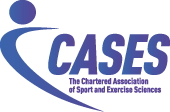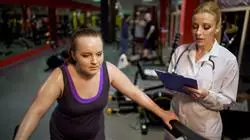University certificate
Scientific endorser

Scientific endorser

The world's largest faculty of nursing”
Introduction to the Program
Specialize in sports nutrition with this Advanced Master's Degree and offer your patients more personalized treatment"

Sports have become widespread throughout society, and nowadays, many people have included physical exercise in their routines. However, limited knowledge in this field has also led to an increase in the number of medical consultations, either for injuries or even for preventive purposes. In this sense, nurses have become highly qualified professionals who are able to provide nutritional advice to athletes. For this reason, TECH has decided to focus on this sector, creating this Advanced master’s degree in Comprehensive Sports Nutrition, which compiles the most important information for nursing professionals.
As such, a high-level teaching team, with years of experience in the sector, has compiled the most comprehensive, up-to-date information, which, in addition to offering great theoretical content, contains a wide range of practical cases that will be fundamental to consolidate knowledge more quickly and efficiently. Therefore, nurses will be able to provide athletes with nutritional guidance as part of their daily work with increased confidence.
Specifically, this program's syllabus provides a global vision of sports nutrition, while focusing on the most important and innovative aspects: Invisible training or proper diet for athletes, and nutrition before, during and after exercise. Additionally, it includes information related to professionals with different personal situations and different sports activities, specifying in each case the best dietary recommendations, with the objective that the nurse has a complete knowledge that allows them to adapt to each user during the development of their daily practice.
In short, TECH’s aim with this program is to provide a unique opportunity that professionals in the sector cannot miss out on, as it provides the most up-to-date information and, above all, an innovative teaching methodology, with a multitude of teaching resources that allow for quality online education. This, together with the quality of the teachers, has made it a benchmark program in the field of sports nutrition for nurses. It is also essential for those who have to combine their learning with the rest of their daily obligations, since they will be able to study at any time and from anywhere, and the student will be able to self-manage their own study time. Undoubtedly, a clear plus in the panorama of postgraduate programs that currently exist.
Stand out in the nursing field by expanding your knowledge in sports nutrition"
This Advanced master’s degree in Comprehensive Sports Nutrition contains the most complete and up-to-date academic program on the market. The most important features of the program include:
- The latest technology in online teaching software
- A highly visual teaching system, supported by graphic and schematic contents that are easy to assimilate and understand
- Practical cases presented by practising experts
- State-of-the-art interactive video systems
- Teaching supported by remote training
- Continuous updating and retraining systems
- Autonomous learning: full compatibility with other occupations
- Practical exercises for self-evaluation and learning verification
- Support groups and educational synergies: questions to the expert, debate and knowledge forums
- Communication with the teacher and individual reflection work
- Content that is accessible from any, fixed or portable device with an Internet connection
- Complementary resource banks that are permanently available
Enroll in this Advanced master’s degree and have direct and unlimited access to all its resources"
The teaching staff for this program is composed of practicing professionals. This way, TECH can fulfill the objective of academic updating that it has set for itself. A multidisciplinary staff of experienced professionals from a variety of environments, who will develop theoretical knowledge in an efficient manner, but above all, will put at the service of the students, practical knowledge derived from their own experience.
This command of the subject is complemented by the effectiveness of the methodological design of this Grand Master. As such, it was developed by a multidisciplinary team of e-learning experts and integrates the latest advances in educational technology, allowing students to study with a range of convenient and versatile multimedia tools that will give them the operational skills they need for their training.
The design of this program is based on Problem-Based Learning, an approach that conceives learning as a highly practical process. To achieve this remotely, TECH will use telepractice. With the help of an innovative interactive video system and Learning from an Expert, students will be able to acquire the knowledge as if they were facing the scenario they are currently learning. A concept that will allow students to integrate and memorize what they have learnt in a more realistic and permanent way.
TECH offers you the most comprehensive and innovative educational material on the current academic scene"

Completing this program will allow you to expand your training in an area of high demand, becoming an expert in Sports Nutrition"
Why study at TECH?
TECH is the world’s largest online university. With an impressive catalog of more than 14,000 university programs available in 11 languages, it is positioned as a leader in employability, with a 99% job placement rate. In addition, it relies on an enormous faculty of more than 6,000 professors of the highest international renown.

Study at the world's largest online university and guarantee your professional success. The future starts at TECH”
The world’s best online university according to FORBES
The prestigious Forbes magazine, specialized in business and finance, has highlighted TECH as “the world's best online university” This is what they have recently stated in an article in their digital edition in which they echo the success story of this institution, “thanks to the academic offer it provides, the selection of its teaching staff, and an innovative learning method aimed at educating the professionals of the future”
A revolutionary study method, a cutting-edge faculty and a practical focus: the key to TECH's success.
The most complete study plans on the university scene
TECH offers the most complete study plans on the university scene, with syllabuses that cover fundamental concepts and, at the same time, the main scientific advances in their specific scientific areas. In addition, these programs are continuously being updated to guarantee students the academic vanguard and the most in-demand professional skills. In this way, the university's qualifications provide its graduates with a significant advantage to propel their careers to success.
TECH offers the most comprehensive and intensive study plans on the current university scene.
A world-class teaching staff
TECH's teaching staff is made up of more than 6,000 professors with the highest international recognition. Professors, researchers and top executives of multinational companies, including Isaiah Covington, performance coach of the Boston Celtics; Magda Romanska, principal investigator at Harvard MetaLAB; Ignacio Wistumba, chairman of the department of translational molecular pathology at MD Anderson Cancer Center; and D.W. Pine, creative director of TIME magazine, among others.
Internationally renowned experts, specialized in different branches of Health, Technology, Communication and Business, form part of the TECH faculty.
A unique learning method
TECH is the first university to use Relearning in all its programs. It is the best online learning methodology, accredited with international teaching quality certifications, provided by prestigious educational agencies. In addition, this disruptive educational model is complemented with the “Case Method”, thereby setting up a unique online teaching strategy. Innovative teaching resources are also implemented, including detailed videos, infographics and interactive summaries.
TECH combines Relearning and the Case Method in all its university programs to guarantee excellent theoretical and practical learning, studying whenever and wherever you want.
The world's largest online university
TECH is the world’s largest online university. We are the largest educational institution, with the best and widest online educational catalog, one hundred percent online and covering the vast majority of areas of knowledge. We offer a large selection of our own degrees and accredited online undergraduate and postgraduate degrees. In total, more than 14,000 university degrees, in eleven different languages, make us the largest educational largest in the world.
TECH has the world's most extensive catalog of academic and official programs, available in more than 11 languages.
Google Premier Partner
The American technology giant has awarded TECH the Google Google Premier Partner badge. This award, which is only available to 3% of the world's companies, highlights the efficient, flexible and tailored experience that this university provides to students. The recognition as a Google Premier Partner not only accredits the maximum rigor, performance and investment in TECH's digital infrastructures, but also places this university as one of the world's leading technology companies.
Google has positioned TECH in the top 3% of the world's most important technology companies by awarding it its Google Premier Partner badge.
The official online university of the NBA
TECH is the official online university of the NBA. Thanks to our agreement with the biggest league in basketball, we offer our students exclusive university programs, as well as a wide variety of educational resources focused on the business of the league and other areas of the sports industry. Each program is made up of a uniquely designed syllabus and features exceptional guest hosts: professionals with a distinguished sports background who will offer their expertise on the most relevant topics.
TECH has been selected by the NBA, the world's top basketball league, as its official online university.
The top-rated university by its students
Students have positioned TECH as the world's top-rated university on the main review websites, with a highest rating of 4.9 out of 5, obtained from more than 1,000 reviews. These results consolidate TECH as the benchmark university institution at an international level, reflecting the excellence and positive impact of its educational model.” reflecting the excellence and positive impact of its educational model.”
TECH is the world’s top-rated university by its students.
Leaders in employability
TECH has managed to become the leading university in employability. 99% of its students obtain jobs in the academic field they have studied, within one year of completing any of the university's programs. A similar number achieve immediate career enhancement. All this thanks to a study methodology that bases its effectiveness on the acquisition of practical skills, which are absolutely necessary for professional development.
99% of TECH graduates find a job within a year of completing their studies.
Advanced Master's Degree in Integrated Sports Nutrition for Nursing
During a sports practice, it is essential that the individual maintains an adequate nutrition that contributes to achieve the training objectives and achieve a better performance. Although this is an area mainly addressed by nutritionists, other professionals linked to the health sector such as nurses can also specialize in the subject, in order to help prevent malnutrition and related diseases. If you want to explore this field and access the most complete nutritional information, at TECH Global University you will find the ideal program, just a click away. In this Advanced Master's Degree, taught in a 100% online format, you will find a global vision of clinical and sports nutrition, complemented with the most important and innovative aspects, including current trends in nutrition and the assessment of dietary-nutritional status. In addition, you will study nutrition techniques during training, muscle-metabolic physiology of exercise and sports assessment in different stages, populations or specific conditions (vegetarianism, veganism, diseases, disabilities). All this will be reinforced through an interactive learning system, based on the latest technology in online teaching.
Complete an Advanced Master's Degree in Comprehensive Sports Nutrition
Nutritional planning in different sports disciplines requires a set of specialized knowledge in terms of metabolic processes. Precisely these aspects are addressed by the TECH program, which will allow you to obtain these skills in an agile and efficient way. Through the syllabus, distributed over a period of two years, you will learn the anthropometric, clinical, biochemical, hematological, immunological and pharmacological data in the dietary-nutritional assessment. In addition, you will study the structure of muscle tissue and its implication in sport, the correct use of ergogenic aids and the different methods of body composition to optimize weight and fat percentage, according to the sport to be practiced. From there, you will be able to design dietary plans according to the sport modality, regulate the metabolic adaptation to exercise, detect possible signs of nutritional alteration and perform nutritional assessments according to the phase in which the athlete is (preparation, competition or rehabilitation). Thanks to this, you will include in your usual practice the latest innovations related to the techniques of food introduction in the diets of athletes.







